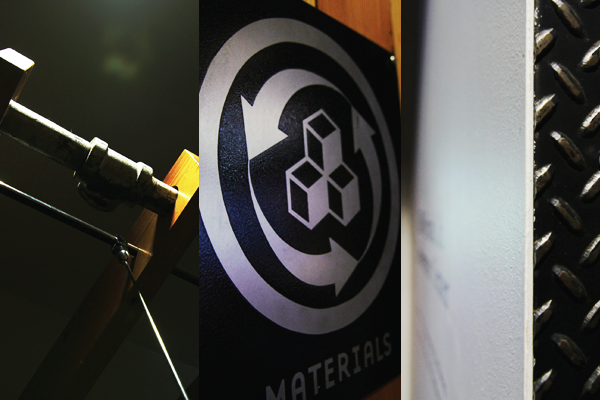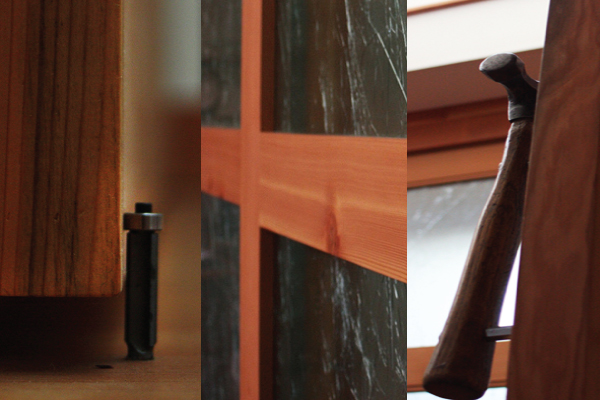Upcycling & reclaiming materials used in building preserves resources & narratives.

Upcycled door fence on West Burnside.
I recently came across an undeveloped lot along West Burnside fenced off from the public by a screen made up entirely of upcycled doors. Each door is painted a different color and has a unique design. Stepping back and taking in the fence, it’s more public art installation than partition, and it brings a distinctive character and personality to the place.

Upcycled materials use at the Jean Vollum Natural Capital Center.
Other examples of upcycling abound throughout Portland on both a small and large scale. In 1998, Ecotrust purchased the McCraken warehouse, a 1895 Romanesque style building, and converted it into the Jean Vollum Natural Capital Center (the first LEED certified historic building in the nation). By the completion of the project, 98% of all construction debris had been reused or repurposed into the new renovation. Ecotrust Director of Events Sydney Mead explained how steel plates, which were originally used for forklifts to drive on, were repurposed as wall panels in the hallways of the building. Other examples of upcycling in the Jean Vollum Natural Capital Center include original plumbing repurposed as lighting fixtures, steel fire doors converted to wall dividers, and wood wall paneling reclaimed from the deconstructed building.

Reclaimed & repurposed materials at H&H headquarters.
Like at the JVNCC, Hammer & Hand upcycled materials extensively as it built its headquarters in SE Portland. Using recycled doors and glass in addition to reclaiming lumber from the old Lewis & Clark College bleachers, the headquarters established an unique aesthetic combining aged materials with modern design while reducing its eco footprint.
Of course upcycling in construction isn’t limited to institutional and commercial projects; it’s equally applicable to residential work, both new and remodeled. Our recent commercial-to-residential remodel in SE Portland, featured in this year’s Build It Green! Home Tour, refinished, reused, and repurposed framing lumber, windows, and plumbing fixtures during construction. We routinely draw on our stockpile of materials salvaged from previous projects to bring upcycled elements into Hammer & Hand remodels and new homes.
While upcycling saves resources and reduces waste during construction, there is also an intangible element to the practice. In an Oregon Home Green Living article last year, Hammer & Hand co-owner Daniel Thomas explained that when we upcycle materials we’re preserving both the embodied energy and embodied narrative of these objects, the unique stories and history stored in each object.
For me, upcycling reminds me of buying a used book. I’m purchasing the words printed on the page but I’m also purchasing the cover that’s been worn and tattered from sitting in its previous owners back pocket, the dog-eared page housing a meaningful quote, and pencil notes in the margins expressing ideas from readers past. Like a used book, when we upcycle materials and repurpose them during construction, we are ensuring that the legacy of the object’s stories and history continues, while allowing new narratives to be written and established.
It’s refreshing to see upcycling occurring in construction of projects all around Portland. As this practice continues to become more mainstream, we should take a moment to appreciate the beauty, utility, and tradition of the materials surrounding us, all waiting for new narratives to be written.
– Jeff
Back to Field Notes